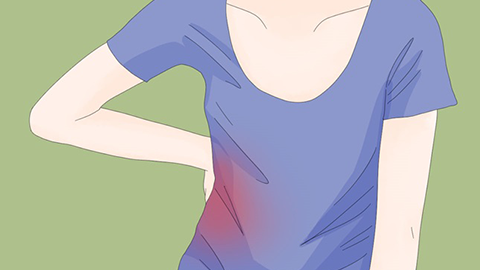What are the spinal changes in ankylosing spondylitis?
In general, ankylosing spondylitis is a chronic inflammatory disease that primarily affects the spine. As the condition progresses, various characteristic changes occur in the spine, mainly including vertebral osteoporosis, squared vertebral bodies, narrowed intervertebral spaces, bamboo spine deformity, and spinal deformities. Detailed analysis is as follows:

1. Vertebral Osteoporosis: In the early stages of the disease, the spinal vertebrae are prone to osteoporosis, characterized by decreased bone density and thinning and reduction in the number of trabeculae in the vertebral bodies. At this stage, the vertebrae's load-bearing capacity decreases, which may increase the risk of vertebral compression fractures. Patients may experience discomfort such as low back pain.
2. Squared Vertebral Bodies: With persistent inflammation, the normal shape of the upper and lower edges of the vertebral bodies gradually changes, and the original concave appearance disappears, causing the vertebral bodies to appear square—this is known as squared vertebral deformity. This change disrupts the normal anatomical structure of the vertebrae, affecting spinal stability and further aggravating dysfunction of the spine.
3. Narrowed Intervertebral Spaces: Inflammation can involve the intervertebral discs, leading to calcification of the annulus fibrosus and disc degeneration, thereby gradually narrowing the width of the intervertebral space. Narrowing of the intervertebral space compresses surrounding nerves, blood vessels, and other tissues, not only causing pain but also significantly limiting the range of spinal motion.
4. Bamboo Spine Deformity: In the late stages of the disease, widespread calcification and ossification occur in the ligaments and fibrous tissues between the vertebrae, causing adjacent vertebrae to fuse. On imaging studies, the spine appears similar to bamboo segments—this is known as bamboo spine deformity. This change causes the spine to lose its normal mobility and become stiff and fixed.
5. Spinal Deformities: Due to varying degrees of involvement in different areas of the spine and abnormal posture caused by chronic pain, spinal deformities may gradually develop. Common deformities include kyphotic deformity and scoliotic deformity. Spinal deformities not only affect a patient's physical appearance but can also compress organs within the thoracic and abdominal cavities.
Patients should maintain proper posture while standing and sitting in daily life, avoid prolonged bending or heavy lifting, and appropriately engage in spinal stretching exercises, such as swimming and yoga, which can help delay disease progression and maintain spinal function. In addition, patients should follow medical advice for regular treatment to control inflammation and reduce further spinal damage.




